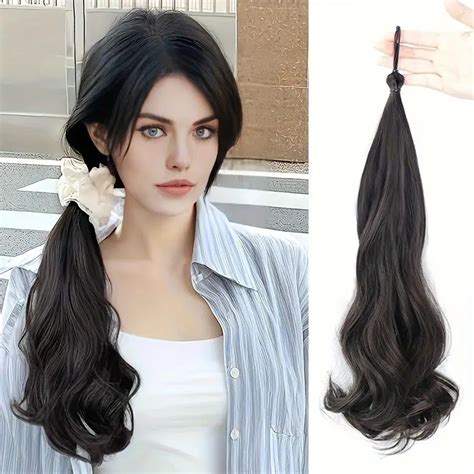Synthetic braid extensions have become increasingly popular in recent years, offering a wide range of benefits and versatility to those looking to enhance their hairstyle. Made from synthetic fibers, these extensions are typically lightweight, durable, and come in a variety of colors and textures, making them suitable for any occasion or personal style.

Types of Synthetic Braid Extensions
There are several types of synthetic braid extensions available, each with its own unique characteristics:
Kanekalon: This is a Japanese-made fiber that is known for its soft, silky texture and natural shine. Kanekalon braids are lightweight and easy to style, making them a popular choice for everyday wear.
Toyokalon: Toyokalon is another Japanese-made fiber that is similar to Kanekalon in terms of texture and appearance. However, Toyokalon braids are slightly more durable and can withstand higher temperatures, making them ideal for heat styling.
Trespass: Trespass is a synthetic fiber that is known for its strength and durability. Trespass braids are resistant to tangling and matting, making them a good choice for those who are active or have a busy lifestyle.
Benefits of Synthetic Braid Extensions
Synthetic braid extensions offer numerous benefits to users, including:
Versatility: Synthetic braids can be styled in a variety of ways, from simple braids to intricate updos. They can also be used to add length, volume, or color to natural hair.
Affordability: Synthetic braid extensions are much more affordable than human hair extensions, making them a more budget-friendly option for those looking to enhance their hairstyle.
Durability: Synthetic braids are made from durable materials that can withstand heat styling and everyday wear. They are also resistant to fading and chemicals, making them a long-lasting investment.
How to Choose Synthetic Braid Extensions
When choosing synthetic braid extensions, there are a few factors to consider:
Color and Texture: Select a color and texture that matches your natural hair or the desired look you want to achieve.
Length: Choose a length that suits your personal style and preferences. Keep in mind that longer extensions will require more maintenance.
Type of Braid: There are various types of braids available, such as box braids, cornrows, and Senegalese twists. Choose a braid style that complements your face shape and personal style.
Common Mistakes to Avoid
Avoid these common mistakes when using synthetic braid extensions:
- Overtightening: Braids that are too tight can cause damage to your natural hair and scalp.
- Sleeping in braids: Remove braid extensions before going to bed to prevent tangling and matting.
- Brushing braids: Use a wide-toothed comb or your fingers to gently detangle braids. Avoid using a hairbrush, which can cause breakage.
- Using harsh chemicals: Avoid using harsh chemicals or heat styling tools on synthetic braids, as this can damage the fibers.
Table 1: Types of Synthetic Braid Extensions
| Fiber Type | Characteristics |
|---|---|
| Kanekalon | Soft, silky texture, natural shine |
| Toyokalon | Similar to Kanekalon, slightly more durable |
| Trespass | Strong, durable, resistant to tangling and matting |
Table 2: Benefits of Synthetic Braid Extensions
| Benefit | Description |
|---|---|
| Versatility | Can be styled in a variety of ways, add length, volume, or color |
| Affordability | More budget-friendly than human hair extensions |
| Durability | Resistant to heat styling, everyday wear, fading, and chemicals |
Table 3: How to Choose Synthetic Braid Extensions
| Factor | Considerations |
|---|---|
| Color and Texture | Choose a match to your natural hair or desired look |
| Length | Select a length that suits your style and preferences |
| Type of Braid | Choose a braid style that complements your face shape and personal style |
Table 4: Common Mistakes to Avoid
| Mistake | Consequences |
|---|---|
| Overtightening | Damage to natural hair and scalp |
| Sleeping in braids | Tangling and matting |
| Brushing braids | Breakage |
| Using harsh chemicals | Damage to synthetic fibers |
According to a survey conducted by the American Hairdressing Association, over 50% of women have used synthetic braid extensions at least once. The survey also found that 80% of women who have used synthetic braid extensions were satisfied with the results.
Conclusion
Synthetic braid extensions offer a wide range of benefits and versatility to those looking to enhance their hairstyle. By choosing the right type, length, and style of braid, you can achieve a natural-looking and stylish look that will last for weeks. With proper care and maintenance, synthetic braid extensions can be a cost-effective and convenient way to transform your hair.
